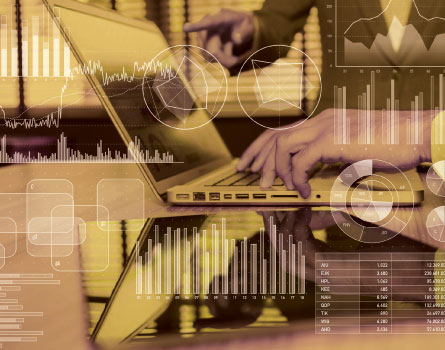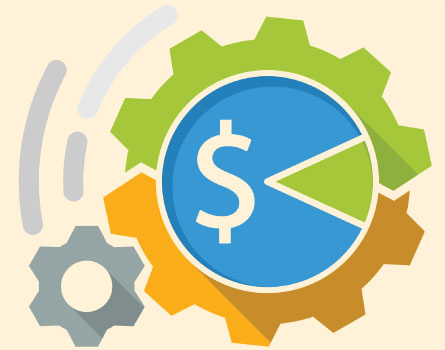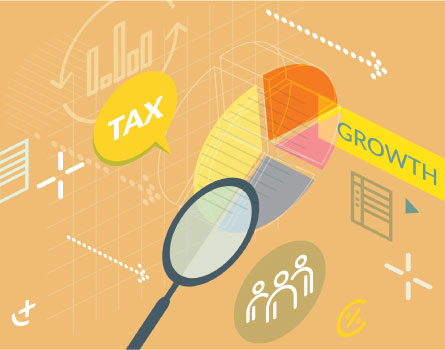Upgrading your ERP?
Why you need to consider tax automation
The evolving online landscape and new economic nexus laws require a fresh approach
After South Dakota v. Wayfair, Inc., the 2018 U.S. Supreme Court decision that expanded thresholds for economic nexus for online sellers and other types of businesses, many companies had to take a hard look at their tax automation strategies and technology platforms.

But the catalyst for a dramatic technology shift goes beyond the latest modifications to tax laws. The ecommerce landscape is changing by the minute, fueled by growth, acquisitions, and the need to elevate the customer experience. To rise to the new demands of ecommerce, companies must position themselves to support new business models and future changes to tax laws, or risk closing their digital doors.
Embarking on a new business paradigm typically sparks a review of a wide range of enterprise technology platforms — more specifically ERP solutions. Organizations poised for growth also examine tax automation solutions in conjunction with enterprise technology upgrades, as taxation and regulations, along with growth plans, will impact sales and use taxes. They usually discover that their legacy ERP solution lacks the breadth and scale required of the new business model. In addition, on-premises solutions lack the agility and visibility required for modern ecommerce.
This eBook will address the urgency of tax automation, the limitations of legacy and on-premises solutions, and the advantages of cloud-based platforms.

Why move to automated tax compliance now?
Upgrading an ERP platform and integrating it with a modern tax automation solution becomes more urgent, and economically feasible, as the definition of nexus expands beyond physical presence. As a result of the Wayfair decision, most U.S. states have enacted or will enact legislation that requires online sellers from out of state to collect and remit sales and use taxes.
But Wayfair is simply the current impetus for transformation. The reality is that tax laws are changing all the time — and too many organizations rely on manual, on-premises solutions to manage this complex and continually changing critical business function.
Wayfair is simply the current impetus for transformation. The reality is that tax laws are changing all the time — and too many organizations rely on manual, on-premises solutions to manage this complex and continually changing critical business function.
Automated tax solutions — such as those from Avalara, TaxJar, Vertex, and other providers — are essential tools for managing a modern ecommerce operation. A company that was registered in five or six states and handling tax compliance manually may now have to remit sales taxes in 30 or 40 states, so it is easier to justify the investment in technology.
Driven by a growing emphasis on ecommerce and a need to accommodate shifting sales tax requirements, business strategies are changing rapidly. Companies need to be able to adjust in real time and accommodate future business models that require expanding to new geographies and placing an increased emphasis on online revenue streams.
While business disruption is necessary to remain competitive, it is also a perfect opportunity to evaluate the company’s ERP platform and related tax automation solutions. When upgrading an ERP solution, it is imperative to scrutinize processes and systems that touch the enterprise platform.
The ERP platform is typically a primary focus of digital transformation efforts, which makes sense as it is the hub of activity surrounding financial reporting and accounting. Since tax automation is closely aligned with these efforts and given all of the upheaval in terms of tax regulations, it is a natural extension of the digital transformation initiative.
While tax automation should be an integral part of the digital transformation project, it is often not a priority. This can cause a huge headache as the implementation moves forward. Tax is commonly among the last things to be considered, and integration with enterprise platforms is not easy.
The ERP platform is typically a primary focus of digital transformation efforts, which makes sense as it is the hub of activity surrounding financial reporting and accounting.

Challenges of updating enterprise platforms to accommodate tax regulation changes
Tax compliance is an ongoing effort that requires continuous updates and involves multiple areas of the organization beyond finance, including sales, marketing, and operations. These processes have historically existed on siloed, disconnected systems, hampering an organization’s ability to manage complex sales and use tax compliance issues.
Marketing may be eyeing a new sales territory, for example, but they may not fully appreciate the implications in terms of tax rate calculation, reporting, and compliance. Finance is looped in after the fact without being able to fully address the implications.
Legacy systems do not meet modern standards of excellence, which involve going beyond gaining efficiencies to driving intelligent business growth.
Of course, many organizations have implemented ERP platforms over the years. However, legacy systems do not meet modern standards of excellence, which involve going beyond gaining efficiencies to driving intelligent business growth.
There are a few drawbacks to relying on an ERP to handle tax automation. One of the most significant is that ERP solutions have some limited tax capabilities that don’t provide the level of detail and granularity needed to meet the needs of a modern ecommerce enterprise. The tax rate calculations available on ERP platforms are typically at a ZIP code level, which isn’t accurate enough to avoid taxation errors because ZIP codes can often encompass more than one, or even several, tax jurisdictions.
Unlike cloud-based platforms, on-premises solutions aren’t regularly updated and usually don’t provide precise enough information to accurately calculate sales tax at the local level. Most non-cloud solutions require tax rate tables to be updated manually, which is labor intensive and prone to error and missed updates. With more than 13,000 sales and use tax jurisdictions in the U.S., that’s a lot of research and data to input, creating a huge margin for error.
Mistakes in calculating tax rates can result in fines as well as a hit to the organization’s reputation and a loss of future opportunities, not to mention the negative impact on customer loyalty and experience. Any mistake is costly. A tax overcharge creates a customer service issue; by the same token, if a business undercharges, it risks audits and penalties.

Benefits of ERP and tax automation upgrades go beyond ROI
An ERP upgrade in concert with tax compliance automation can generate positive return on investment in terms of money, time, resources, and risk reduction. One of the major benefits is eliminating the manual updating of tax rates. Some SaaS solutions offer a remotely hosted tax content and rules engine that connects into your business systems and automatically updates tax data in real time for accurate rate calculation. The best systems also handle returns filing and digital exemption certificate management.
However, gaining efficiencies through automation is table stakes. A key benefit of ERP and sales tax automation transformation is the ability to inform how sales tax trends will impact the business. Detailed analysis of where the company is doing business and paying sales taxes is essential in understanding how expanding to a new geography or adding new products could impact the company’s tax liability, among other key decision drivers.
Platforms such as those available from Avalara, a leading provider of cloud-native automated tax compliance solutions, open up the possibilities to enhance the customer experience. A few examples:
- A real-time application that’s fast is critical because if customers must wait too long for the sales tax calculation (and shipping), they’ll leave the website and the sale is lost.
- A built-in address verification feature reduces the possibility of shipping an item to an invalid address.
- Confident, streamlined compliance can help businesses sleep better at night. Take the case of Dallas-based integrated marketing agency Moroch.
“We no longer have to track those changing nexus requirements, search out that information, and count how many transactions we’ve had in a jurisdiction,” says Brenda Hodge, director of financial operations at Moroch. “That information is just handed to us now, saving us hours of work.”
And when there’s an audit, having quick access to the documents and support can help ease the burden. When Moroch was audited, Hodge submitted reports she pulled using Avalara, and never heard from the auditor again. “That was the easiest audit I’ve ever done,” she states.
Seamless integration with new business systems is another benefit of an ERP and tax automation upgrade. Many new systems can be added quickly with minimal effort through plug-and-play integration.
Finally, scalability with ease of management is also an important feature as companies expand their ecommerce footprint. “We have some very audacious growth plans,” says Emily Pfeiffer, vice president of marketing and digital at Berkshire Blanket & Home Co. “The kind of volume we’re planning will rely 100% on Avalara’s ability to help us scale. I can honestly say that having Avalara will enable that kind of growth, because we know we’re covered.”
Conclusion
Spending time on sales and use tax compliance is a drain on resources that could be better spent on adding value to your business. Even if you can manage all the complexities, you’ve lost productivity.
With most U.S. states having enacted, or considering, legislation to require online sellers from out of state to collect and remit sales and use taxes, the job just got nearly impossible without an automated solution.
Changes in tax laws, combined with the continued momentum toward ecommerce, presents the perfect opportunity to review your ERP and associated tax automation solutions. Waiting will only put your efforts further behind your ecommerce competitors.
While we hope you find this information valuable, this is not a substitute for tax advice from a certified tax professional. If you’re unsure of your tax liabilities, please contact a tax expert.
Avalara helps businesses of all sizes get tax compliance right. In partnership with leading ERP, accounting, ecommerce, and other financial management system providers, Avalara delivers cloud-based compliance solutions for various transaction taxes, including sales and use, VAT, GST, excise, communications, lodging, and other indirect tax types. Headquartered in Seattle, Avalara has offices across the U.S. and around the world in Canada, the U.K., Belgium, Brazil, and India.









